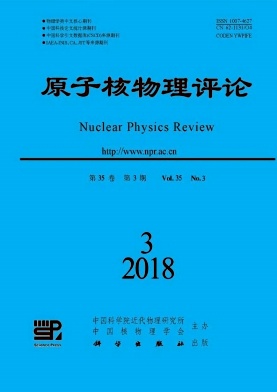|
[1]
|
PODGORSAK E B. Radiation Oncology Physics:A Handbook for Teachers and Students[M]. Vienna:International Atomic Energy Agency, 2005:170. |
|
[2]
|
NEWHAUSER W D, ZHANG R. Physics in Medicine and Biology, 2015, 60(8):155. |
|
[3]
|
TAYAMA R, FUJITA Y, TADOKORO M, et al. Nucl Instr Meth A, 2006, 564(1):532. |
|
[4]
|
HAN S, CHO G, LEE S B. Nuclear Engineering and Technology, 2017, 49(4):801. |
|
[5]
|
SLOPSEMA R L, KOOY H M. Phys Med Biol, 2006, 51(21):5441. |
|
[6]
|
TADDEI P J, FONTENOT J D, ZHENG Y, et al. Physics in Medicine and Biology, 2008, 53(8):2131. |
|
[7]
|
KASE Y, YAMASHITA H, SAKAMA M, et al. Physics in Medicine and Biology, 2015, 60(15):5833. |
|
[8]
|
VIDAL M, MARIZI D L, SZYMANOWSKI H, et al. PPhysics in Medicine and Biology, 2016, 61(4):1532. |
|
[9]
|
ZHAO T, CAI B, SUN B, et al. Journal of Applied Clinical Medical Physics, 2015, 16(5):367. |
|
[10]
|
PAGANETTI H, JIANG H, LEE S Y, et al. Medical physics, 2004, 49(4):2107. |
|
[11]
|
AKAGI T, KANEMATSU N,Takatani Y, et al. Physics in Medicine and Biology, 2006, 506(3):1919. |
|
[12]
|
PERL J, SHIN J, SCHUMANN J, et al. Medical Physics, 2012, 39(11):6818. |
|
[13]
|
OOZEER R, MAZAL A, ROSENWALD J C, et al. Medical Physics, 1997, 24(10):1599. |
|
[14]
|
VAN L P, VAN'T V A A, ZELLE H D, et al. Physics in Medicine and Biology, 2001, 46(3):653. |
|
[15]
|
TITT U, ZHENG Y, VASSILIEV O N, et al. Physics in Medicine and Biology, 2008, 53(2):487. |
|
[16]
|
ZHENG Y, FONTENOT J, TADDEI P, et al. Physics in Medicine and Biology, 2008, 53(1):187. |
|
[17]
|
PAGANETTI H. Proton Therapy Physics[M]. Boca Raton:CRC Press, 2012:46. |






 甘公网安备 62010202000723号
甘公网安备 62010202000723号 DownLoad:
DownLoad: